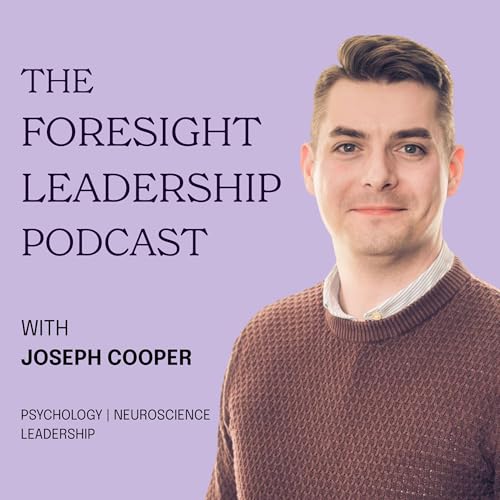
Psychological Safety: When Silence Speaks Louder Than Words
カートのアイテムが多すぎます
カートに追加できませんでした。
ウィッシュリストに追加できませんでした。
ほしい物リストの削除に失敗しました。
ポッドキャストのフォローに失敗しました
ポッドキャストのフォロー解除に失敗しました
-
ナレーター:
-
著者:
このコンテンツについて
That subtle pause before someone speaks - that hesitation to raise an idea - is a window into your team’s climate. In this episode, we go beneath the jargon to explore what psychological safety actually is, how it’s built (and eroded), and what leaders can do to bring voice, trust, and learning alive in real work.
In this episode, we slow down to explore the origins, logic, and power of psychological safety. This is not about being nice - it’s about creating a social climate where speaking up is safer than silence, even under stress. We trace the concept from Amy Edmondson’s foundational research in medical teams through to modern understandings of climate, neurobiology, and performance. You’ll hear why safety must coexist with accountability, how small leader behaviours send big signals, and how safety becomes not a perk but infrastructure in complex, uncertain contexts. Whether your team is small or large, remote or clustered, this episode lays the groundwork for every leader’s journey to build real learning cultures.
What You’ll Learn:
- The true meaning of psychological safety - beyond comfort and niceness
- Why safety is group-level, not individual, and why that matters
- How silence and self-protection show up when safety is absent
- Why fear narrows thinking and undermines contribution
- How biological systems respond to interpersonal threat and reward
- Leader practices that enable voice: framing work as learning, modelling imperfection, surfacing the unsaid, constructive responses
- How safety operates under pressure - and how to begin rebuilding it
Useful Resources:
- Edmondson, A. (1999). Psychological safety and learning behavior in work teams. Administrative science quarterly, 44(2), 350-383.
- Edmondson, A. C., & Lei, Z. (2014). Psychological safety: The history, renaissance, and future of an interpersonal construct. Annu. Rev. Organ. Psychol. Organ. Behav., 1(1), 23-43.
- Edmondson, A. C., & Bransby, D. P. (2023). Psychological safety comes of age: Observed themes in an established literature. Annual Review of Organizational Psychology and Organizational Behavior, 10(1), 55-78.
- Hallam, K. T., Popovic, N., & Karimi, L. (2023). Identifying the key elements of psychologically safe workplaces in healthcare settings. Brain sciences, 13(10), 1450.
- Bahadurzada, H., Edmondson, A., & Kerrissey, M. (2024). Psychological safety as an enduring resource amid constraints. International journal of public health, 69, 1607332.
- Join The Foresight Leadership Podcast Facebook Group: (https://www.facebook.com/groups/theforesightleadershippodcast/)
- Book a call to work with Joseph: (https://bookings.foresightleadershipgroup.co.uk/#/coaching-services)
- Connect with Joseph on LinkedIn: (https://www.linkedin.com/in/josephwcooper91/)
Your Next Steps:
If this episode stirred something - a hesitation in a meeting, a withheld idea, a fear of speaking - take a moment to notice. Share that reflection in the Facebook group, or message me directly. If you want to deepen your practice of safety, the show notes include paths to work together or explore further readings.


